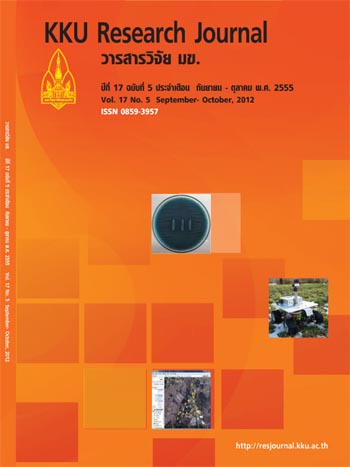Adsorption of lead, cadmium and copper on natural and acid activated bentonite clay
Main Article Content
Abstract
The aim of this research work was to prepare acid activated bentonite clay by using HCl as an acid chemical reagent. The adsorption capacity of natural and acid activated bentonite clay with lead, cadmium and copper was also investigated. Concentrations of the metals were analysed by using flame atomic absorption spectrophotometry. All specific surface area of natural and acid activated bentonite clay was measured by N2 adsorption. The results showed that acid activated clay increased its specific area with 57% of SBET (47 to 74 m2/g), while the average pore diameter of acid activate bentonite clay was smaller than that of natural bentonite clay. The maximum adsorption capacity of natural and acid activated bentonite clay were found to Pb2+ with 83.02 and 92.85 mg/g, respectively, followed by Cd2+ and Cu2+. The Langmuir adsorption model could be used to explain the adsorption isotherm with the pseudo-second order. However, the uptake sorption data of all metals was more similar with pseudo-first order than that of pseudo-second order.
Article Details
How to Cite
Budsaereechai, S., Kamwialisak, K., & Ngernyen, Y. (2017). Adsorption of lead, cadmium and copper on natural and acid activated bentonite clay. Asia-Pacific Journal of Science and Technology, 17(5), 800–810. retrieved from https://so01.tci-thaijo.org/index.php/APST/article/view/83292
Section
Research Articles


